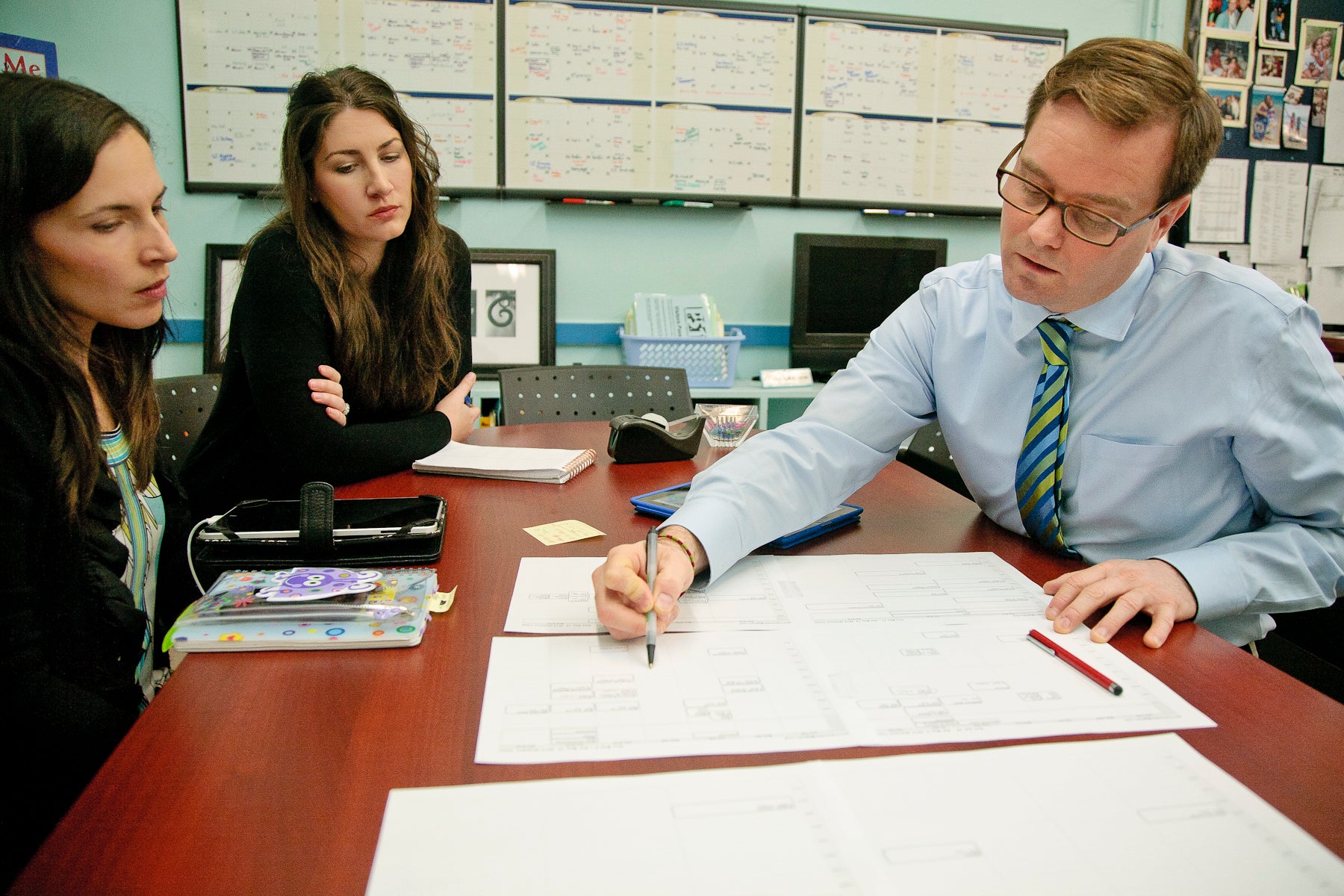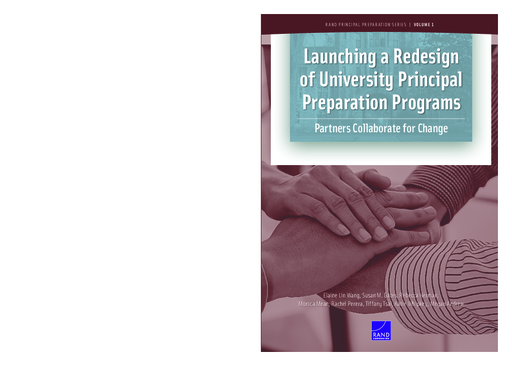Breadcrumb
- Wallace
- Reports
- Launching A Redesign Of Universi...
Launching a Redesign Of University Principal Preparation Programs
Partners Collaborate for Change

- Author(s)
- Elaine Lin Wang, Susan M. Gates, Rebecca Herman, Monica Mean, Rachel Perera, Tiffany Tsai, Katie Whipkey, and Megan Andrew
- Publisher(s)
- RAND Corporation
- DOI Link
- https://doi.org/10.7249/RR2612
Summary
How we did this
This study examines the goals and outcomes of the first year of the University Principal Preparation Initiative. Researchers analyzed data collected through site visits, interviews, and focus groups.
University principal preparation programs have long faced criticism. Too many inadequately prepare future principals to meet the job’s demands. Seven universities sought to change that. They worked to improve their programs in collaboration with school districts, their state, and other partners. The four-year University Principal Preparation Initiative launched in 2016 and was funded by The Wallace Foundation.
This report describes the effort’s first year. It finds that universities and their partners established strong working relationships. That enabled them to develop a vision for better principal training and to begin planning.
The teams from seven sites participating in the initiative each included representatives from:
- A university principal training program
- At least three school districts that hire program graduates
- An exemplary principal training program to provide mentorship
- A state education office responsible for matters like program accreditation.
First-Year Accomplishments
Each site created a “logic model” that listed the partners’ desired outcomes from the effort and steps to reach them. Collaborating on a logic model gave participants a common understanding of the initiative and how its parts fit together. The activity also helped partners forge strong working relations.
The seven universities and their partners also:
- Established school leader standards
- Agreed on expectations for program graduates
- Assessed each program’s current offerings to determine strengths and weaknesses.
This groundwork helped universities begin redesigning their programs based on local needs and research. Curriculum changes made by the end of the first year varied. Examples included more emphasis on culture building or special education. Some planned changes were common. All seven universities intended to boost their internships and other field experiences. They also intended to link practical experience more closely with course content.
Obstacles to Success
Each site encountered challenges. A common one was leadership turnover among the various partners. Another was time constraints facing the busy professionals involved in the collaboration. There were also institutional difficulties. These included university policies like a lengthy course approval process. Some faculty members worried that emphasizing more practical skills in coursework would take time from learning about theory. Leadership teams at each site found ways to overcome challenges and keep engagement high.
The report identified some lessons learned from the first year. These included the importance of selecting partner organizations that valued innovation and individuals with strong communication skills. The report also found that developing strong relationships among partners early on encouraged commitment and progress.
The participating universities were:
- Albany State University, Ga.
- Florida Atlantic University
- North Carolina State University
- San Diego State University
- University of Connecticut
- Virginia State University
- Western Kentucky University

Strong partnerships between universities and school districts are [a] hallmark of effective programs.
— RAND report
Key Takeaways
- Wallace’s University Principal Preparation Initiative supported seven university school leader preparation programs in redesigning their offerings. They did so in collaboration with school districts and their states. The goal was to better prepare future principals for the job’s demands. This report summarizes results for the first year in a four-year initiative.
- Each university program worked in partnership with at least three school districts, a state education office, and a similar program elsewhere able to provide mentoring.
- Collaborating on a “logic model” was an important activity for each site. The logic model listed desired outcomes and steps to reach them. Collaborating on a logic model gave participants a common understanding of the initiative and how its parts fit together. The activity also helped partners forge strong working relationships.
- Partners at each site had some common accomplishments in the first year. These included establishing principal standards and agreeing on expectations for program graduates. Each site also evaluated current program offerings to determine strengths and weaknesses.
- Common obstacles to success included leadership turnover among various partners and time limitations for participants. Some faculty members had concerns about courses becoming too focused on practical skills. Certain university policies also constrained progress.
Visualizations
A Sample Logic Model for Changing Principal Preparation at Universities

Hear From the Programs
Related Articles
- Article Series: UConn's Program Redesign
- Revamped University Principal Training Yields District Change, Too
- Think States Play No Role in Shaping Effective Principals? Think Again
- University-district Partnership Takes New Approach to Principal Prep
- State, District, University Leaders: Supporting School Leaders










